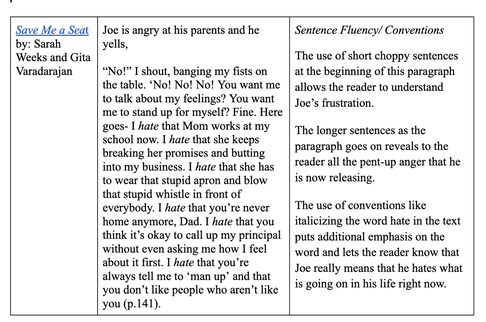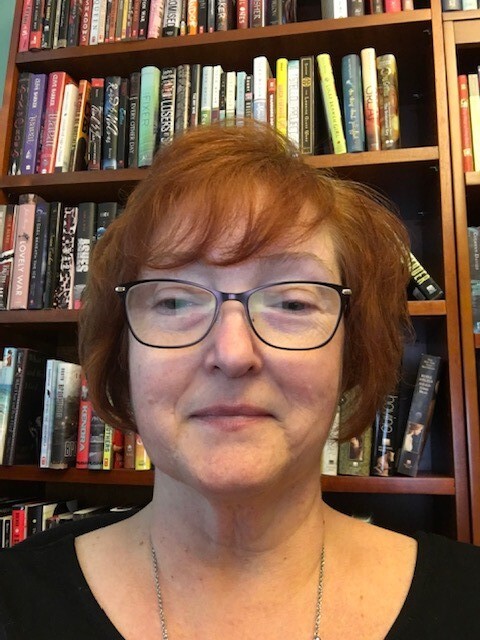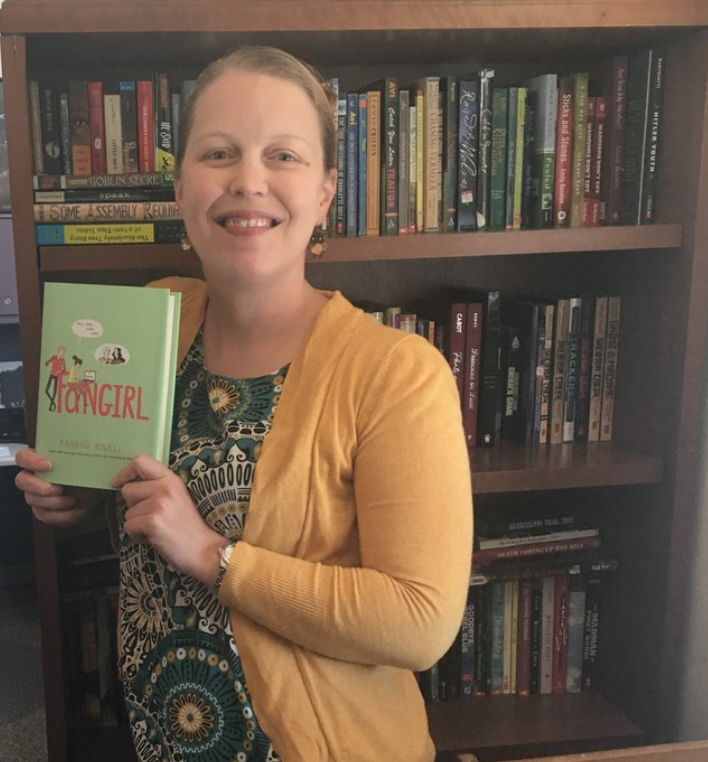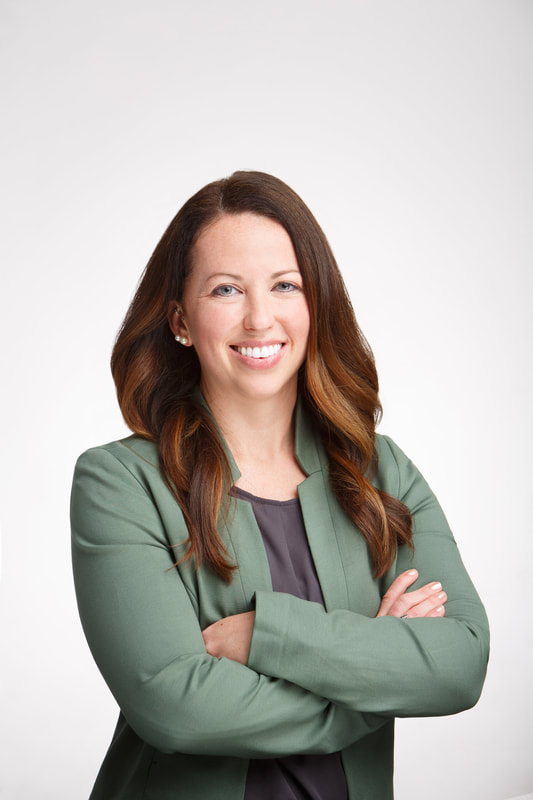
As teachers, we know that young adult literature (YA) can serve as a mentor text for students. We know that we need to think about how we are going to have students work with these texts. Before we ask students to notice what the writers do in their texts to create the stories, we ask them first to just read–for themselves, for discussions, for themes and connections. Students engage with the novels as readers when they work to make sense of the text, identify connections to their lives and other texts, and discuss key ideas with other students. Once we have explored the text as readers, we begin to look at it as writers.
When students begin to look at the YA novel as a mentor text and begin to notice not just the story but what the writer is doing to tell the story, they begin to read like a writer. We ask, “What do you notice in the text?” Beginning by asking what they notice is a way to get them to look at the text without the pressure of asking them to identify specific literary terms or sentence patterns. Asking them to notice is more complicated than it initially sounds–we are asking them to find something that stands out to them because of the way they respond to it as readers.
An Affair of Poisons by Addie Thorley (2019) is a historical fantasy novel centered on Mirabelle Movoisin, a seventeen year old alchemist who unwittingly helps the Shadow Society poison King Louis XIV. She partners with Josse De Bourbon, the bastard son of the king, to protect his siblings, unite the country, and defeat the Shadow Society. The opening passage provides an opportunity for students to think about strong verbs and specific adjectives. It also offers a strong hook to pull the reader into the story.
My laboratory reeks of death. Not of blood and flesh and decay, but the garlicky bit of arsenic, the musty essence of hemlock, and the sweet smell of oleander—like rose water and citrus. The lethal perfume tickles my nose as I rush about the hearth, stoking the fire and whisking the steaming concoction in my cast-iron kettle.
Today I will kill a man. (1)
When we examined this hook with students, they noticed that the verbs–reek, tickles, rush, etc.–are strong verbs that add to the description in the passage. Students also noticed that the adjectives used–garlicky, musty, sweet, etc.– did not overwhelm the description. One student said, “The author didn’t use three or four adjectives in a row. She only used one so it made it really stand out.” Much to the students' surprise, they noticed that the second sentence was actually a fragment and that it started with “not,” which made the contrast of smells really stand out. We also discussed power in the line, “Today I will kill a man.”
After examination, we asked the students to think of something from their own lives they could describe and to try out some/all of the same craft elements that Thorley used.
Student example:
The back room is suffused with a smell like no other. Not of books, as one may expect from the staff room of a library, but of the steel tang of sorting carts, the musty dampness of paper dust, and the greasy odor
emanating from the lone microwave in the corner—like a haphazard olfactory representation of all the tasks
that occur in the place. The unique mixture resides in my nose as I go about my duties, scanning in incoming
books, sorting them onto the unordained shelves, and getting them ready for the general public to read.
Today I will keep the library running.
This is one of so many examples that students can examine and practice different writing styles from. As teachers, we look for examples of strong writer’s craft while we are reading. When you read a text today, look for interesting sentences, short passages, and craft techniques that you can bring to your students to enhance their writing.
After the students’ work with the opening passage of An Affair of Poisons, they began to look at other YA books to see how those texts opened. They noticed that three of the books they were reading for different literature circles had similar themes.
Jewell Parker Rhodes’s Black Brother, Black Brother opens with
I wish I were invisible. Wearing Harry Potter’s Invisibility Cloak or Frogo Baggins’s Elvish ring. Whether shrouded in
fabric or slipping on gold, it wouldn’t matter to me. I’d be gone. Disappeared. (3)
Tae Keller’s When You Trap a Tiger opens with
I can turn invisible.
It’s a superpower, or at least a secret power. But it’s not like in the movies, and I’m not a superhero, so don’t
start thinking that. Heroes are the stars who save the day. I just–disappear. (1)
And, Sarah Prineas’s The Magic Thief opens with
A thief is a lot like a wizard. I have quick hands. And I can make things disappear. But then, I stole the magician’s locus magicalicus and almost disappeared myself forever. (1).
Students noticed that the way that disappear and invisible were used in the opening lines played with the way that we used the words. For example, one student said, “In The Magic Thief, things disappeared meaning that they were stolen and gone but in Black Brother, Black Brother, disappeared means that he wants to be invisible, not gone but just not visible.” Students discussed the challenges of defining invisible and disappear, and how authors used the differences in meaning to create different feelings in the reader. A student argued, “Invisible is something that superheroes play around with but do you really wanna be invisible in your real life?” Students focused on when it was good to be invisible and when it was not. They also discussed the different genres of books and what the words meant in the context of the books. Then, they wrote their own versions.
Student Example:
I’m always the new kid and both visible and invisible at the same time. It isn’t something I can turn on and off
exactly. I’m invisible when people talk about things they did last year or last month and very visible when I have to
stand in the front and announce where I’m from. I’d like to disappear on command. I’d like to be invisible by my
choice and not by your actions.
Over the years, we have become adept at reading like writers; now, it is time to teach our students to do the same. We use a literature circle role called Reading-Writing Connector, which requires students to read and take note of interesting sentences and writing strategies that authors use to make their writings more powerful and/or more easily understood by readers.
Student example of connecting reading and writing:
Happy Reading (and Writing)!
Melanie and Emily
Keller, T. (2020). When you trap a tiger. New York: Random House.
Prineas, S. (2009). The magic thief. New York: Harper Collins.
Rhodes, J. P. (2020). Black brother, black brother. New York: Little, Brown, and Company.
Thorley, A. (2019). An affair of poisons. Salem, MA: Page Street Publishing Company.
Weeks, S. & Varadarajan, G. (2016). Save Me a Seat. New York: Scholastic.





 RSS Feed
RSS Feed